When researching Heat Pumps, there isn’t much real information available on the cost to install a Heat Pump. Nor is there much information on how much it would really cost to run a heat pump. There are multiple sources explaining how heat pumps work and I’ve read dozens of them hoping glean little bits of the information I was looking for. The only way to find out the cost to install a heat pump is to get quotes and get started.
Getting heat pump quotes was just as infuriating as getting quotes for my crawlspace repairs. But I believe the bias was against heat pumps themselves, rather than a slur against female intelligence. Either way two of the three quotes were shit.
But here’s the thing, for the first 10 years living in this house, I was married to a plumber. And yeah, plumbers don’t know heat-pumps, but my ex had drinking buddies who spent a lot of time sitting at my kitchen table shooting the shit and drinking beer. I learned a lot just by listening to the bluster and bullshit. If nothing else, I learned that plenty of tradesmen and HVAC guys are very traditional. They were set in their ways 30 years ago and they haven’t become any more open to new ideas as they’ve hit their 50’s and 60’s.
Heat Pumps Have Evolved.
Heat pumps are not new, they’ve been around in North America for at least as long as those HVAC guys that sat around drinking beer at my kitchen table. And yeah, the first heat pumps kind of sucked. They blew cold air in the winter and struggled to keep up when temperatures dropped below a certain point. Heat pumps have come a long way since then, but a lot of the old guard hasn’t kept up.
The First Quote
Unfortunately I wound up discarding the first quote in a fit of filing but it was entirely inappropriate. First off, while it was a quote for a ductless system, it would have only ever worked as a supplemental system. It called for 3 heads – One in my living room and 1 in each bedroom. The salesman took very few measurements. He didn’t even look in one of the bedrooms he meant to install part of the system in. The rooms in my house flow into one another in somewhat of a U shape and his plan would have left an entire leg of the U with no source of heating or cooling. It is also the hottest leg of the U – the kitchen and small utility area with the hot water tank in the summer and way less hot in the winter. Yet this completely ineffective system could be mine for the super low cost of around $19,000.
The Second Quote
The second quote came from a company that has done nearly all of my HVAC work in the past. One of the more disappointing quotes, but understandable because the guy was the same age as me – old enough to have been around for those early heat pumps that really didn’t work in my climate. The owner (s) are older people, definitely more traditional. Also as a company they had little interest in taking advantage of the Greener Homes program to expand their business and it showed in the quote.
The quote was for a hybrid system with a Natural Gas furnace to back up the heat pump. None of the equipment quoted was eligible for the government grant, which means none of it was eligible for the government loan.
He quoted:
So to understand my problem with this quote, the salesman felt 40,000 BTU was needed to heat my home in the winter, but quoted a Heat Pump only capable of producing 18,000 BTU of heat. So in effect I was buying a traditional gas furnace and a/c system because that is all it would have ever functioned as. But I would be paying top dollar to ‘say’ I had a heat pump. Top dollar to the tune of $16,500 plus HST.
My impression of the salesman was that he was more of an installer than salesman. Working in skilled trades can be hard on the body, those who are able to shift to sales as they get older will. He did a lot more measuring and note taking than the first salesman, but in the end still a no-go. The quote was for equipment that would have had me still primarily heating with Natural Gas, would have left me ineligible for the grant, and paying interest to finance the purchase and installation.
The Third Quote
The third quote came from a company actively pursuing those heat pump installations. It was also a company that had a form of certification from the brand of heat pump I was interested in. What this tells me is it is a company actively embracing new technology and investing in training their employees. What it got me was a Heat Pump system that actually works as a Heat Pump.
The salesman spent at least 2 hours taking measurements and notes. He went in the crawlspace. Once the initial quote was sent we had more discussion via email. In the end I went with a ductless system.
My Ductless Heat Pump System
- Mitsubishi Ductless Condenser Multi-Zone 48k Hyper Heat Pump $12749.00. A 42k unit would have met my needs but for some reason is not included in the list of equipment eligible for the Greener Homes Grant.
- An 18k BTU head for the living room – $2,243.00. This one also covers the dining room and to some extent the kitchen.
- A 12k BTU head for the Master Bedroom – $2011.00
- Three 6k heads – $1998.00 each. One for the secondary bedroom, one for my office (also heats utility area and to some extent the kitchen) and one in the bathroom. The one for the bathroom was completely optional, just a choice I made to add. I am happy I made that choice, but the bathroom would have been fine without it too.
Total cost including linesets, branch box and installation was 23,997.00 plus HST.
Comparing Final Costs
So to compare the second quote with the final cost:
|
Quote 2 |
Quote 3 |
| COST |
$16,500.00 |
$23,997.00 |
| HST |
$2,145.00 |
$3,119.61 |
| Subtotal |
$18,645.00 |
$27,116.61 |
| Less Grant Amount |
$0.00 |
-$5,000.00 |
| 10 yr Cost to Finance |
$5,086.10 |
$0.00 |
| Final Cost |
$23,731.10 |
$22,116.61 |
Like this:
Like Loading...
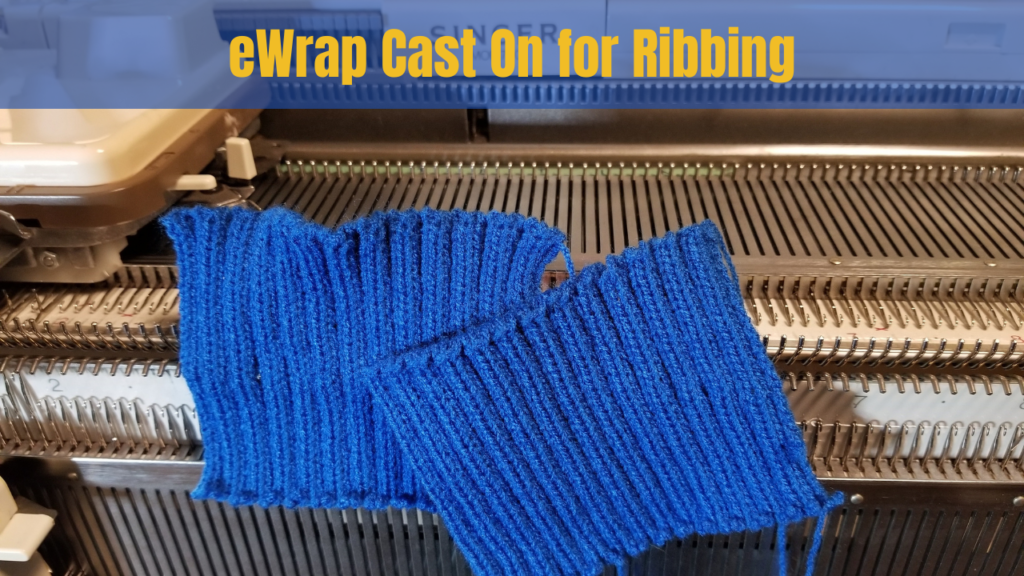 I prefer the eWrap cast on in all situations including when I’m casting on ribbing.
I prefer the eWrap cast on in all situations including when I’m casting on ribbing.

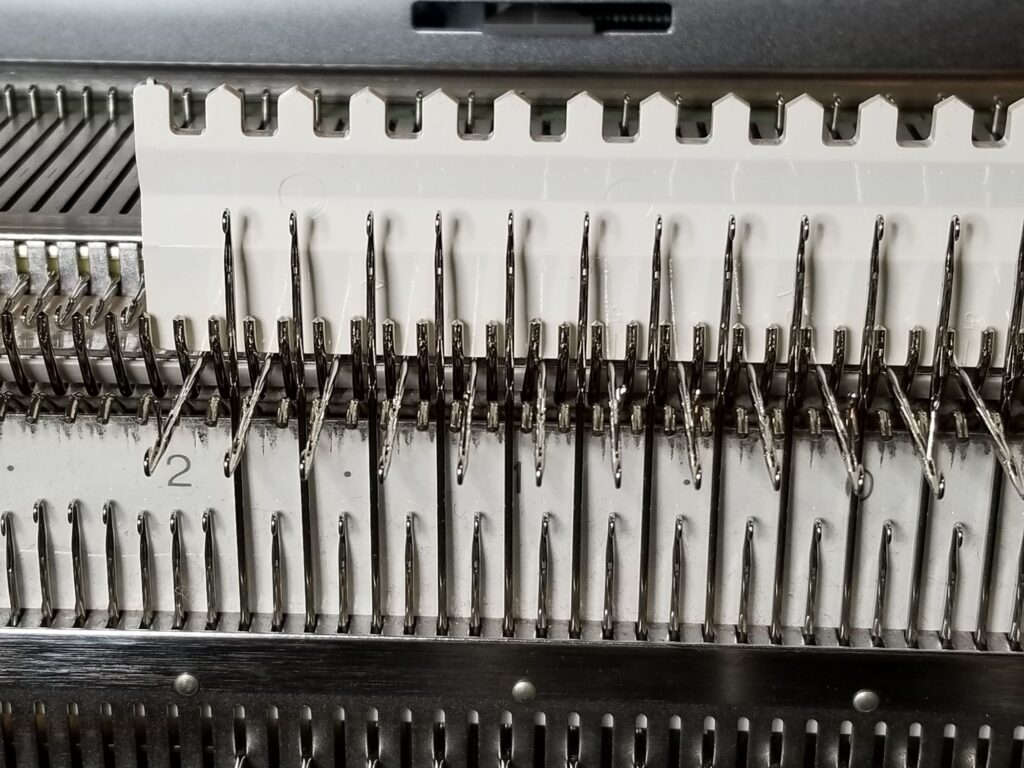 For a 1 x 1 rib, we set the pitch on our ribber to ‘P’ and the swing to 5. Using our 1 x 1 needle pusher we pull our desired number of needles from the main bed and the alternating needles of the ribber bed with our carriages on the right (COR).
For a 1 x 1 rib, we set the pitch on our ribber to ‘P’ and the swing to 5. Using our 1 x 1 needle pusher we pull our desired number of needles from the main bed and the alternating needles of the ribber bed with our carriages on the right (COR).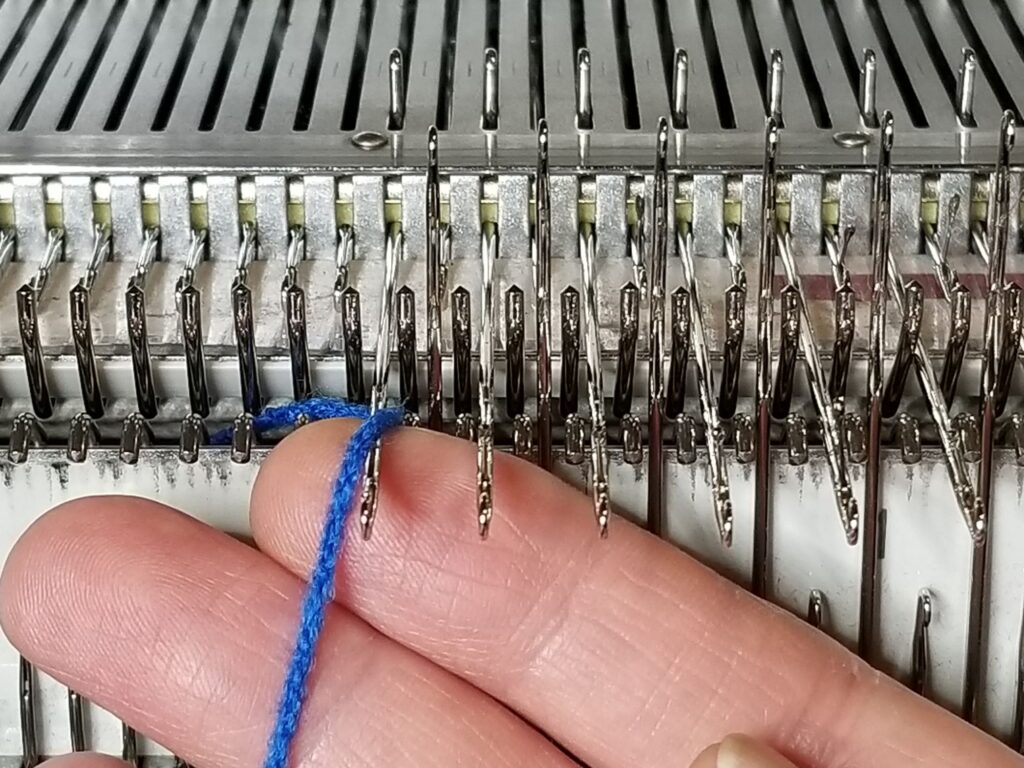
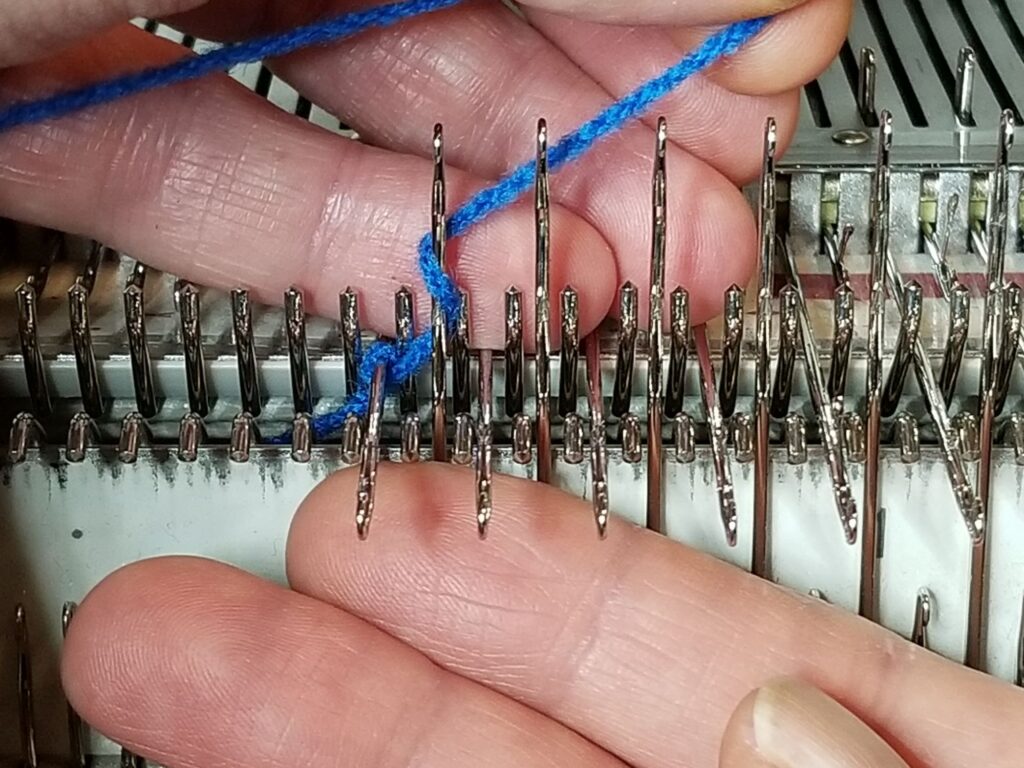
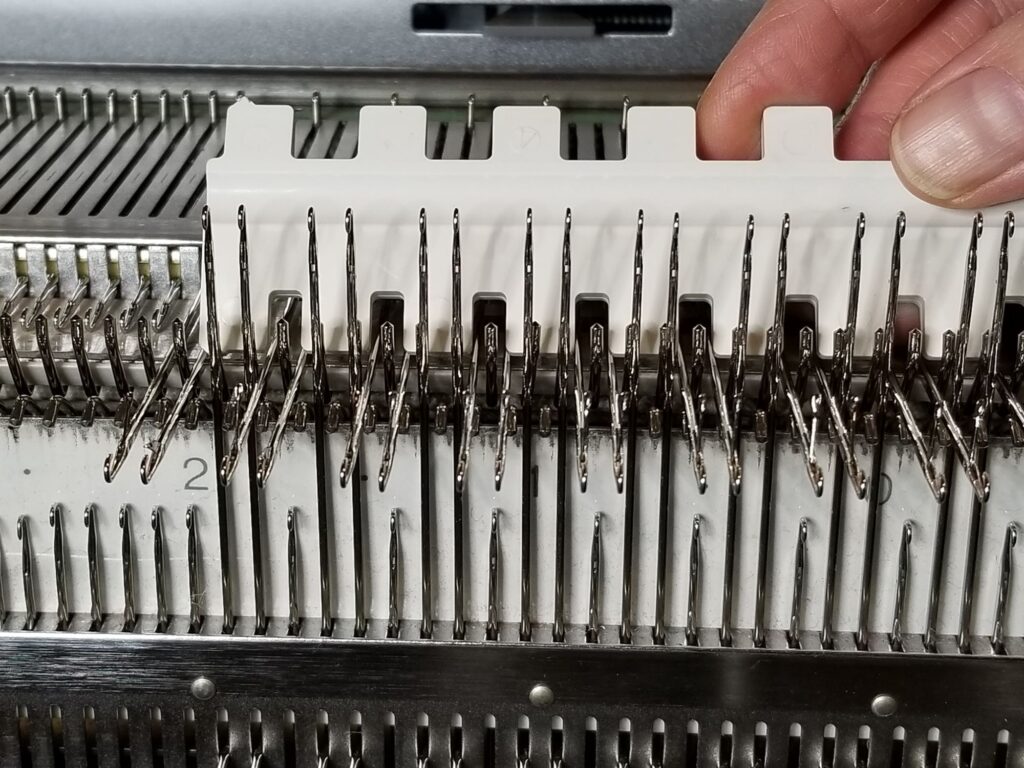 For 2 x 2 Industrial Rib, we set our pitch to ‘H’ or half pitch. Swing is set to 5. With our carriage on the right (COR) and using our 1×2 needle pusher, we pull needles on the main bed and ribber bed so they look as above.
For 2 x 2 Industrial Rib, we set our pitch to ‘H’ or half pitch. Swing is set to 5. With our carriage on the right (COR) and using our 1×2 needle pusher, we pull needles on the main bed and ribber bed so they look as above.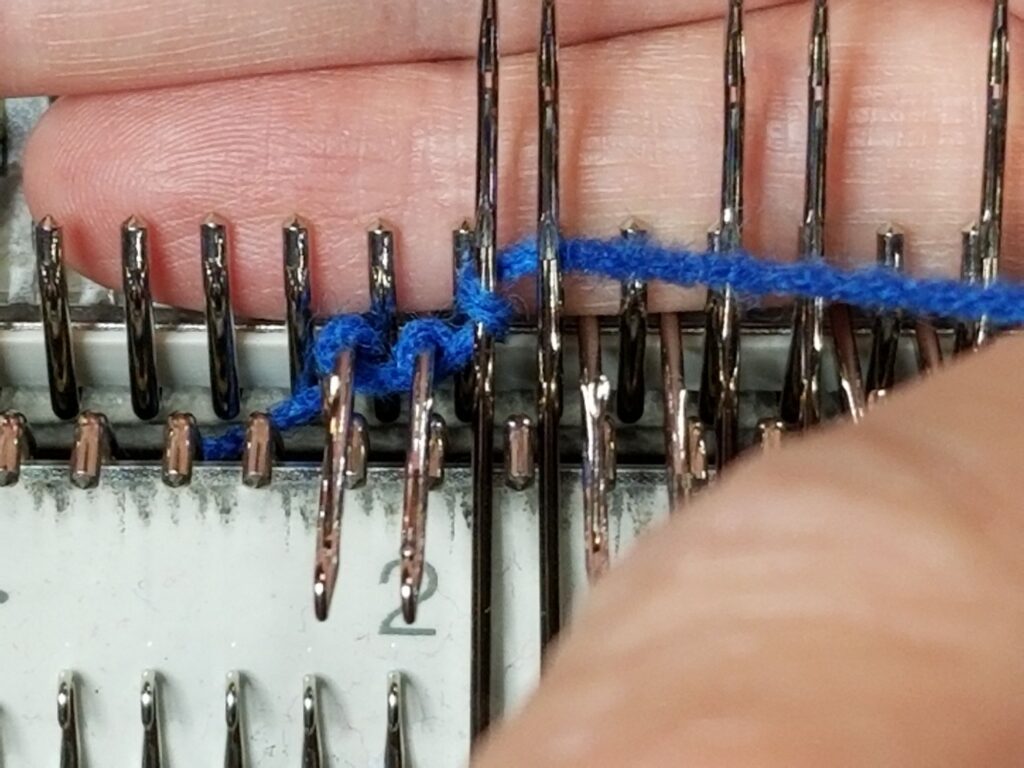

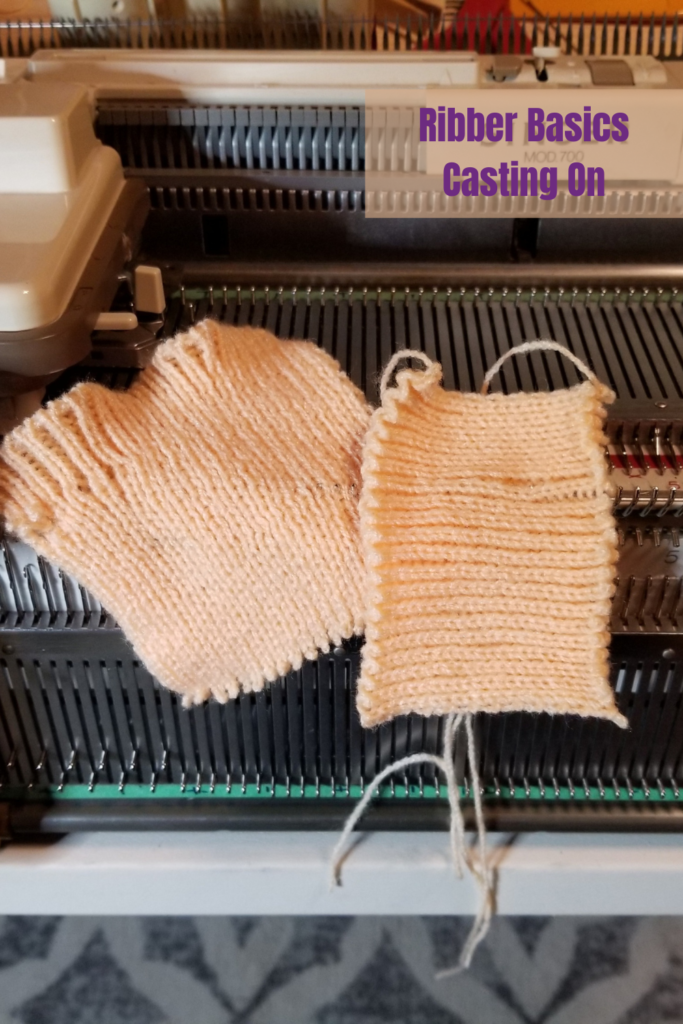 Casting on with the Ribber was one part of machine knitting I really struggled with. I still struggle with it some days. Getting the first steps exactly right and then completely bodging it up in the next one because I missed a carriage setting is the norm for me. But this is how we do the circular cast on with Singer Knitting Machines.
Casting on with the Ribber was one part of machine knitting I really struggled with. I still struggle with it some days. Getting the first steps exactly right and then completely bodging it up in the next one because I missed a carriage setting is the norm for me. But this is how we do the circular cast on with Singer Knitting Machines.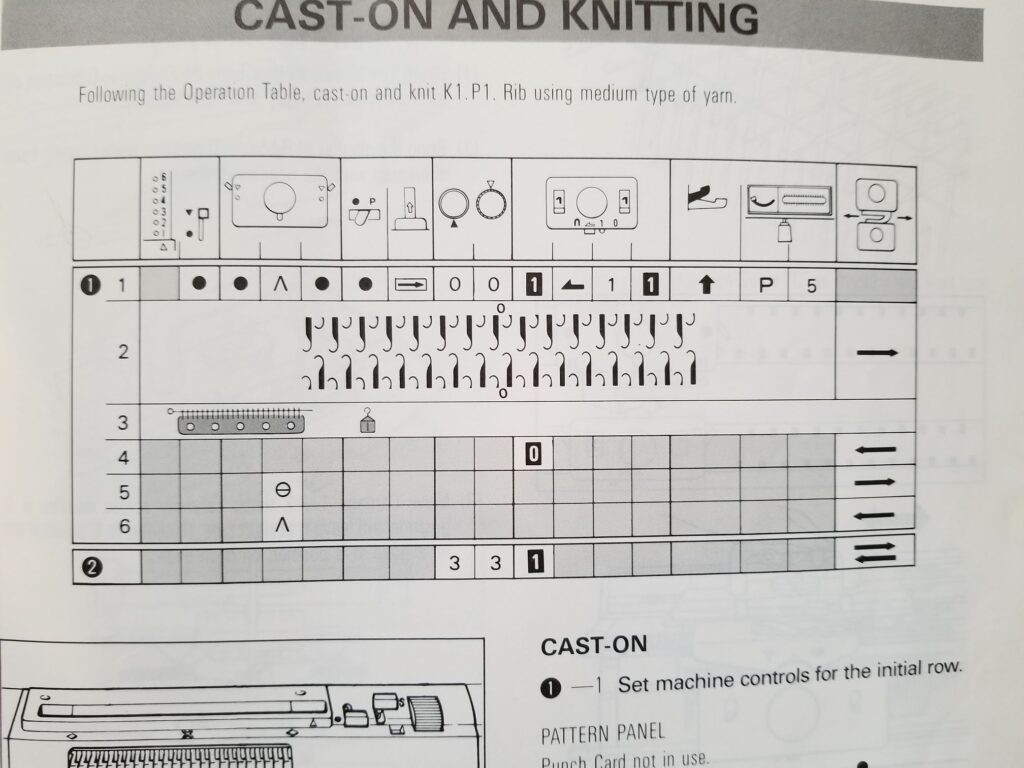
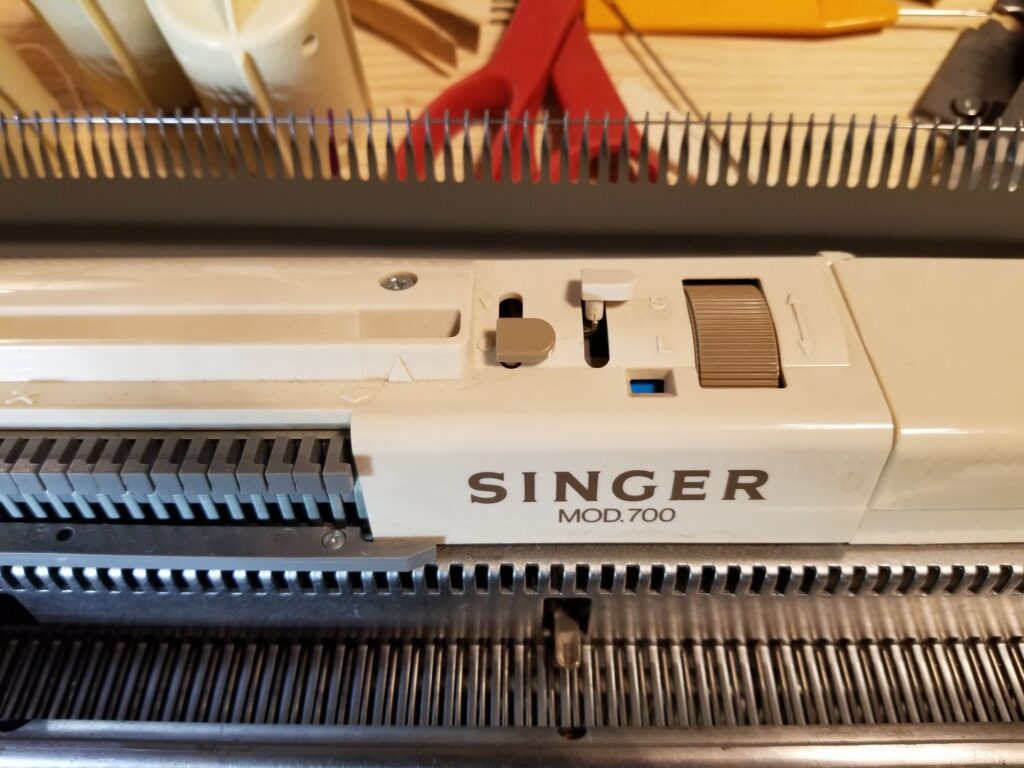
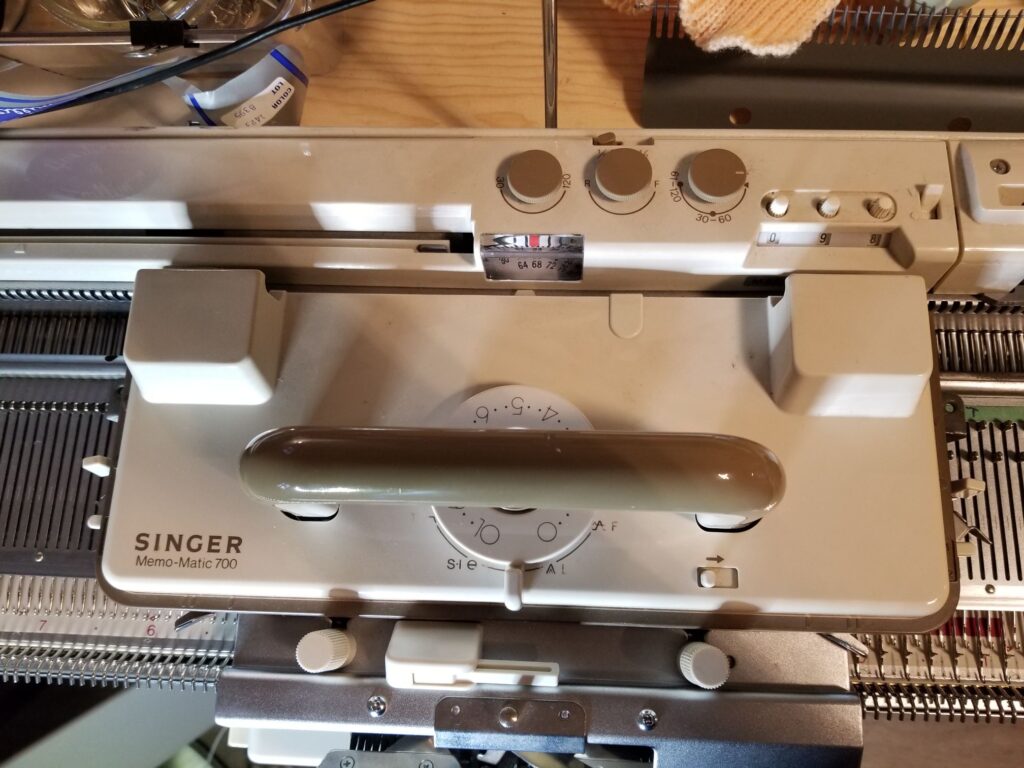
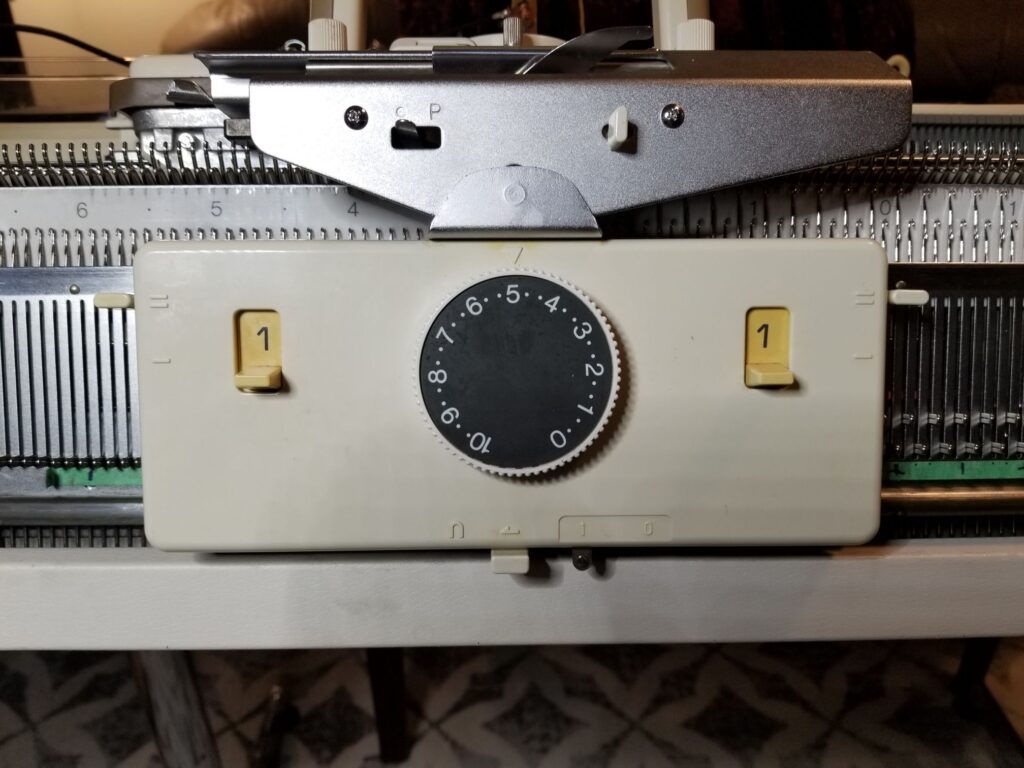
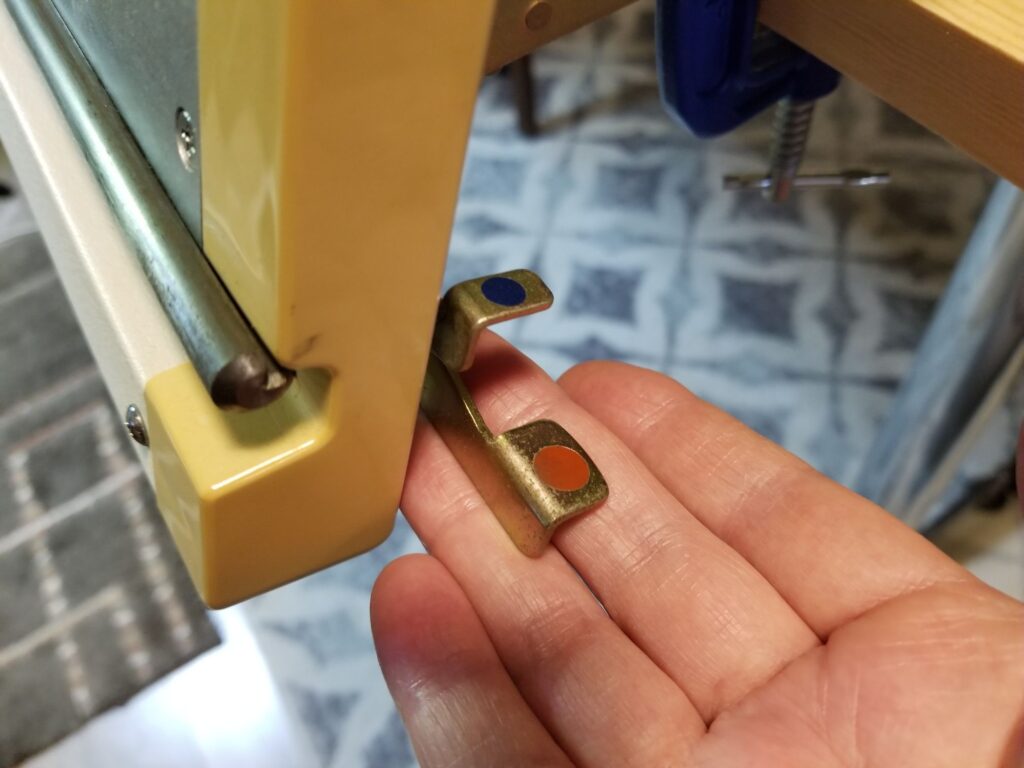
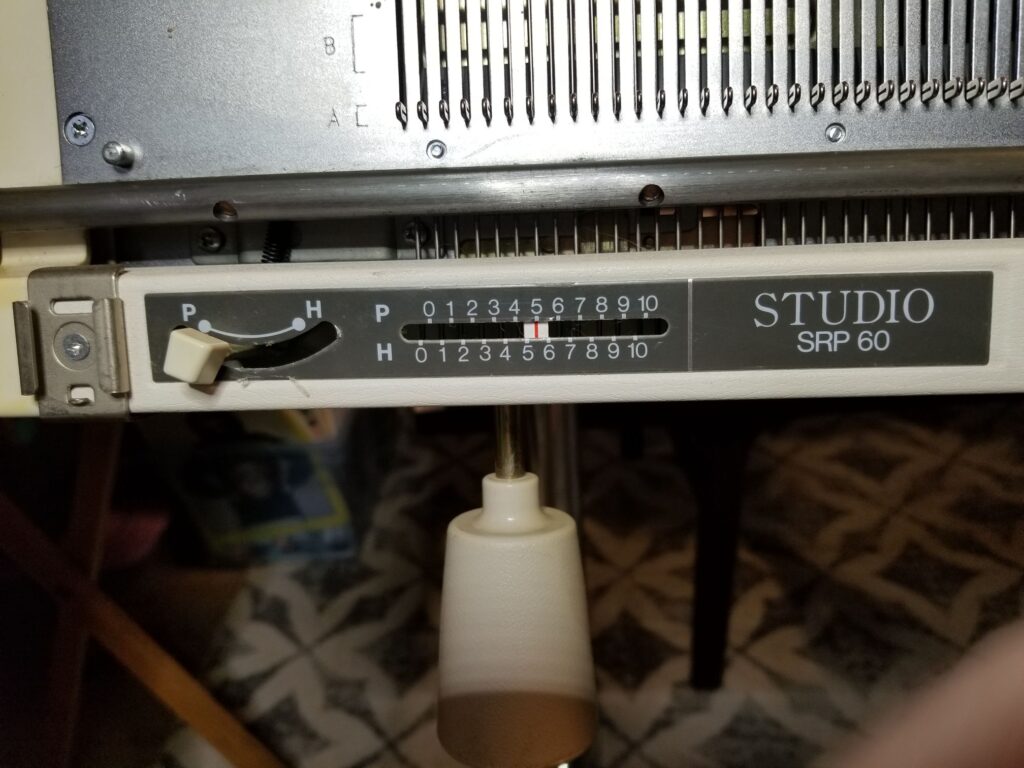
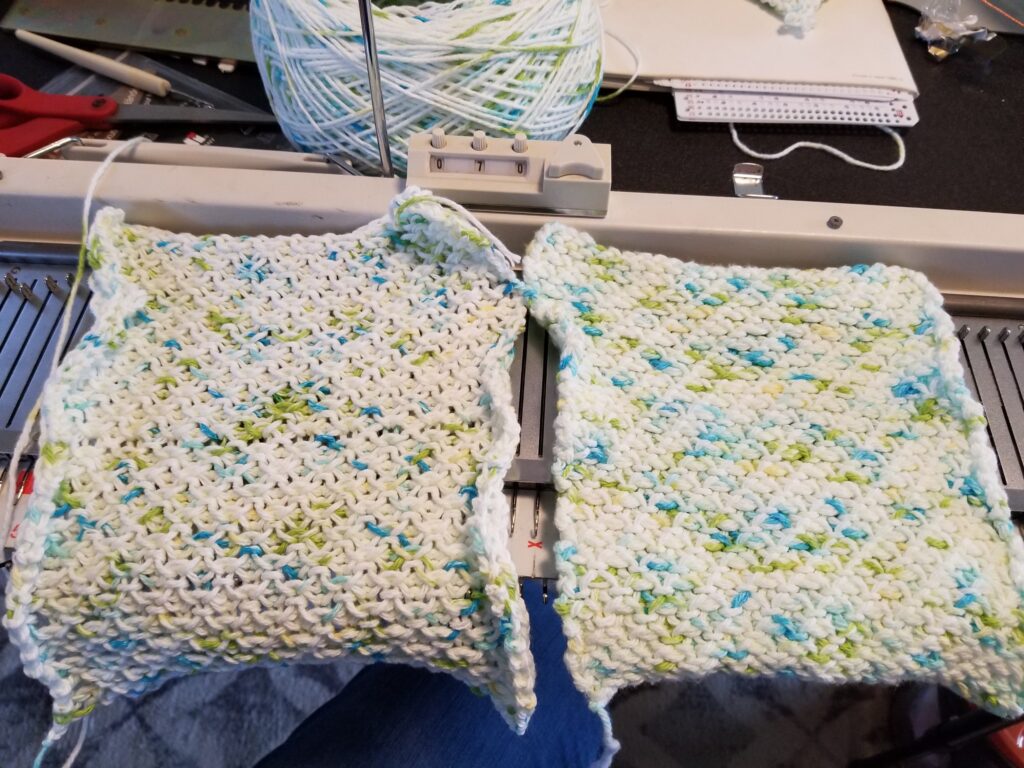
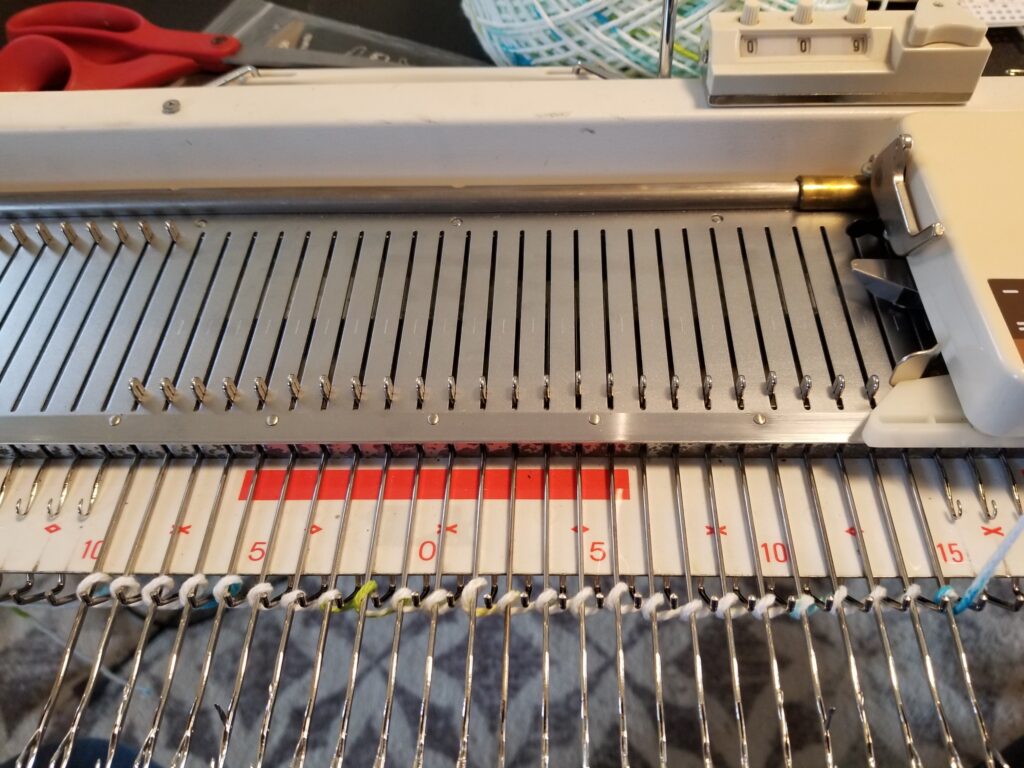 Now if you follow me on YouTube, I did a couple of videos on rehabbing my
Now if you follow me on YouTube, I did a couple of videos on rehabbing my 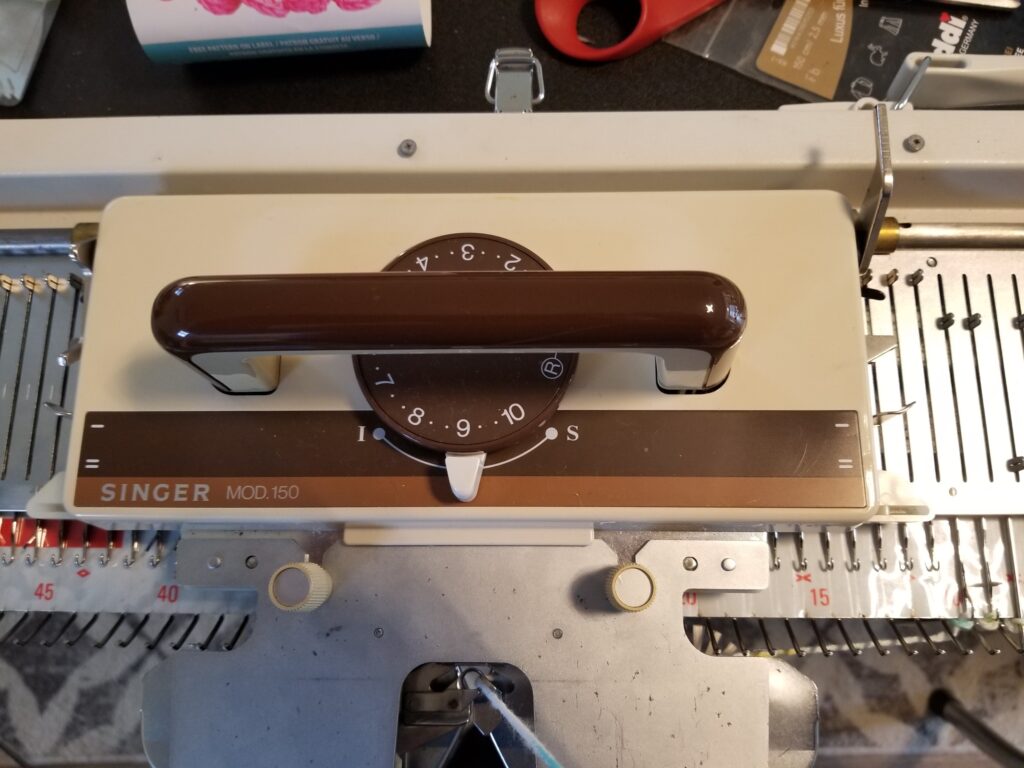 For the first row, I set my carriage to tuck stitch. For my machine that is done by setting the Russell Levers at the sides of the carriage to position ‘-‘ instead of ‘=’. Set the stitch selector to stockinette. On my machine, tension 9 is a good stitch size. Keep in mind the yarn shrinks in the wash which can make the cloth feel more like a pot holder than a dish cloth if the stitch size is too small. You can see how much the washed dishcloth on the right of the first picture shrunk compared to the just knitted cloth on the left.
For the first row, I set my carriage to tuck stitch. For my machine that is done by setting the Russell Levers at the sides of the carriage to position ‘-‘ instead of ‘=’. Set the stitch selector to stockinette. On my machine, tension 9 is a good stitch size. Keep in mind the yarn shrinks in the wash which can make the cloth feel more like a pot holder than a dish cloth if the stitch size is too small. You can see how much the washed dishcloth on the right of the first picture shrunk compared to the just knitted cloth on the left.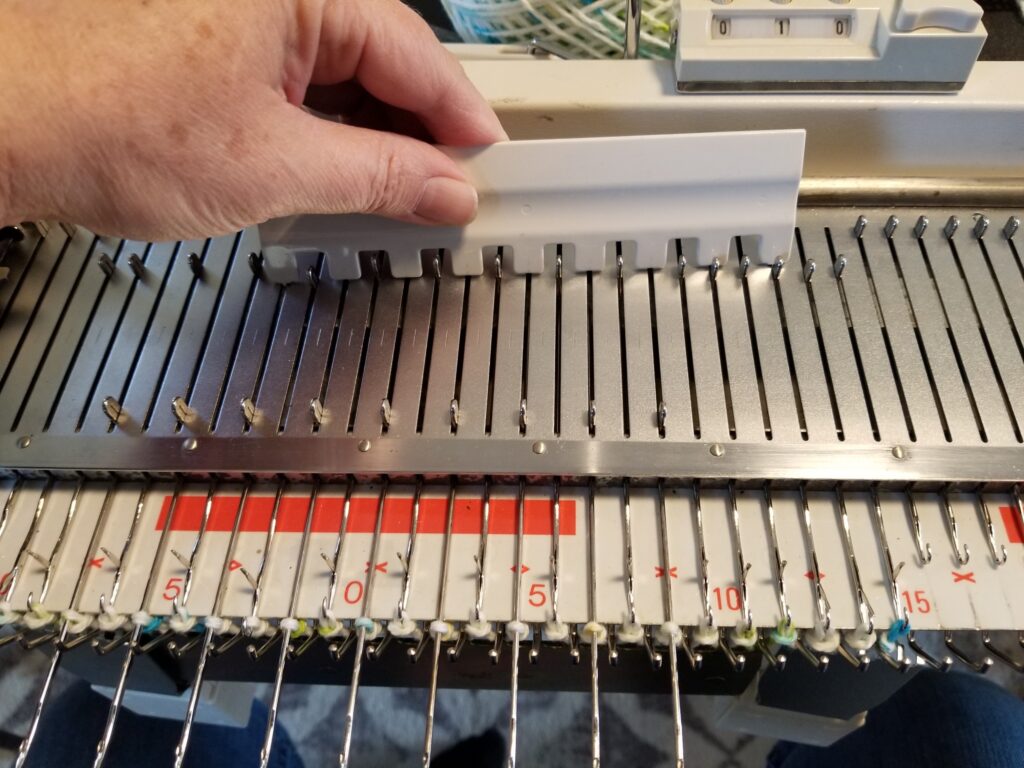 Next leaving the first 2 needles in working position, I pull every other needle out to ‘hold’.
Next leaving the first 2 needles in working position, I pull every other needle out to ‘hold’.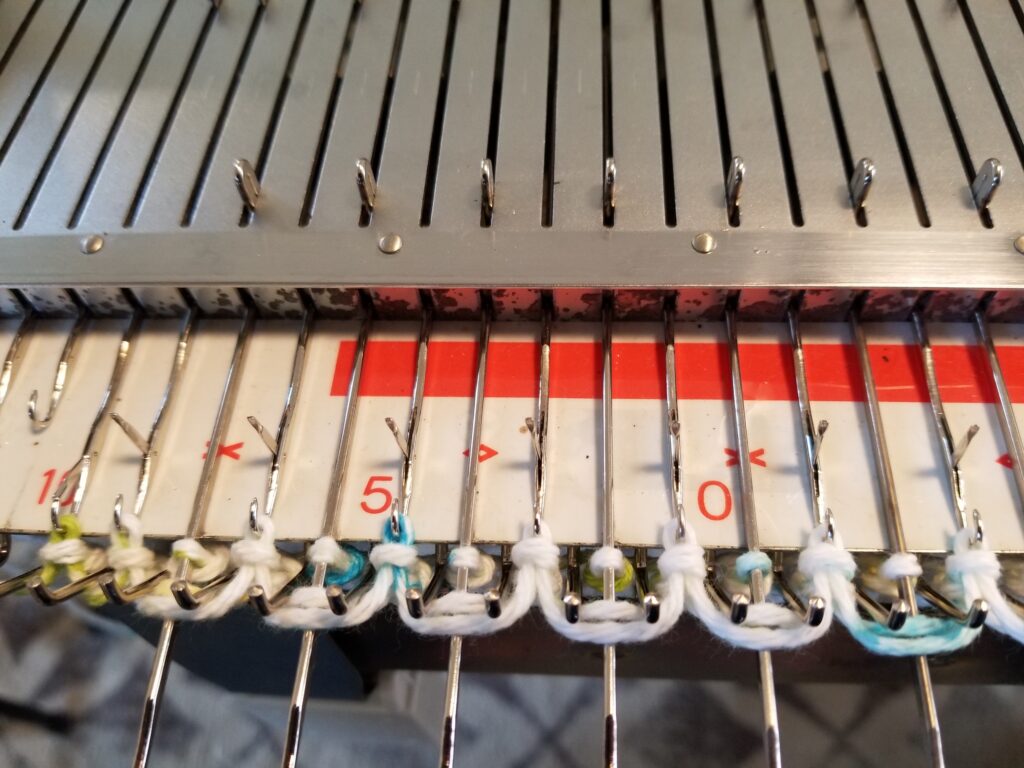
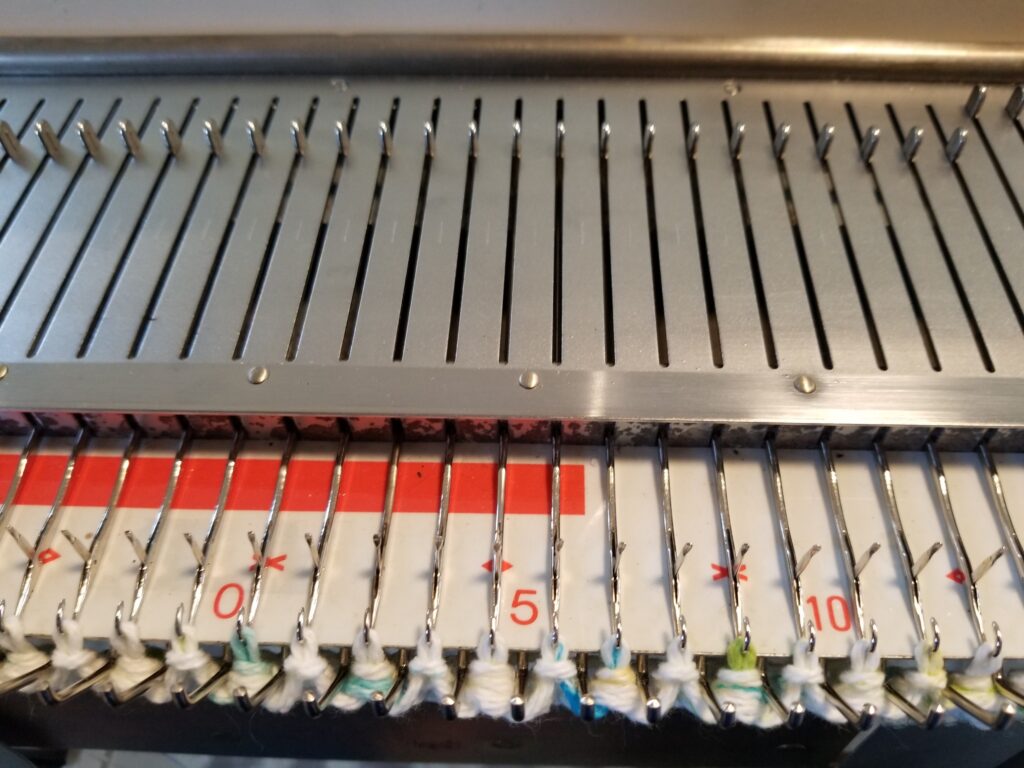
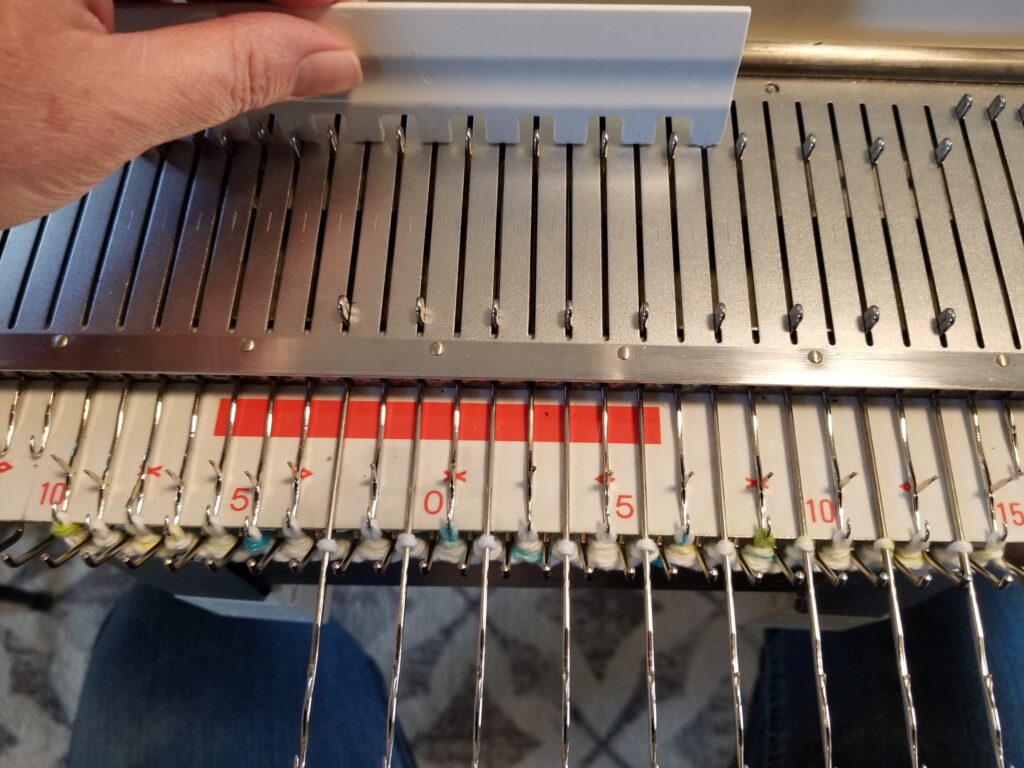
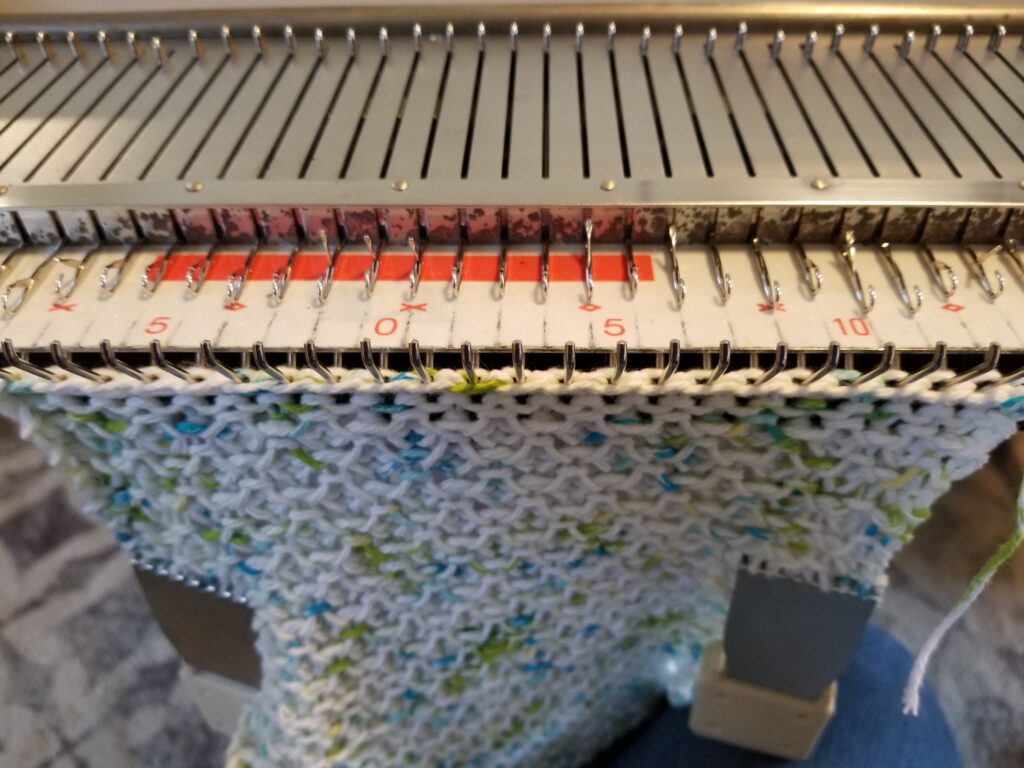 I continue on in the pattern until my row counter is around 70. Then I bind off after the last row of all needles knit.
I continue on in the pattern until my row counter is around 70. Then I bind off after the last row of all needles knit. By all rights that post should never even have been noticed let alone gone viral. The pictures were low quality and even the video I made showing the process was awful. But I planted it with succulents – Oh My! (heavy sarcasm here and it was actually hens and chicks or sempervivum) and one day a very popular site –
By all rights that post should never even have been noticed let alone gone viral. The pictures were low quality and even the video I made showing the process was awful. But I planted it with succulents – Oh My! (heavy sarcasm here and it was actually hens and chicks or sempervivum) and one day a very popular site – 